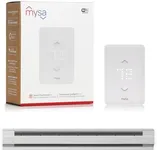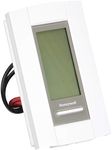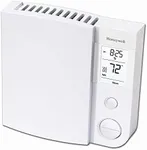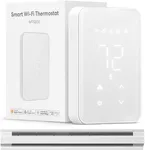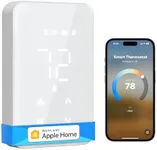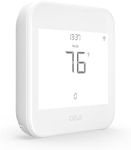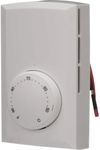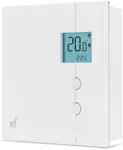Buying Guide for the Best Thermostat For Electric Baseboard Heat
Choosing the right thermostat for your electric baseboard heater can significantly impact your comfort and energy efficiency. The right thermostat will allow you to maintain a consistent temperature, save on energy costs, and provide ease of use. When selecting a thermostat, consider the following key specifications to ensure you get the best fit for your needs.CompatibilityCompatibility refers to whether the thermostat can work with your specific type of electric baseboard heater. This is crucial because not all thermostats are designed to handle the high voltage that electric baseboard heaters require. To navigate this, check the voltage rating of the thermostat and ensure it matches your heater's requirements. Typically, electric baseboard heaters operate on 120V or 240V. Choose a thermostat that explicitly states it is compatible with electric baseboard heaters to avoid any installation or operational issues.
ProgrammabilityProgrammability in a thermostat allows you to set different temperatures for different times of the day or week. This feature is important for optimizing energy use and maintaining comfort. Programmable thermostats can be divided into non-programmable, 5-2 day programmable (weekdays and weekends), and 7-day programmable (custom settings for each day). If you have a regular schedule, a 5-2 day programmable thermostat might be sufficient. For more flexibility, a 7-day programmable thermostat allows for different settings each day, which is ideal if your schedule varies.
Temperature RangeThe temperature range indicates the minimum and maximum temperatures that the thermostat can control. This is important to ensure that the thermostat can maintain the desired comfort level in your space. Most thermostats for electric baseboard heaters have a wide range, typically from 40°F to 90°F. Consider your climate and personal comfort preferences when choosing a thermostat with an appropriate temperature range.
User InterfaceThe user interface includes the display and controls of the thermostat. A good user interface is important for ease of use and accessibility. Thermostats can have simple dial controls, digital displays, or even touchscreens. If you prefer straightforward operation, a basic model with a dial might be sufficient. For more advanced control and better visibility, especially in low light, a digital display or touchscreen can be more convenient.
Smart FeaturesSmart features in a thermostat allow for remote control and integration with home automation systems. This is important for convenience and advanced energy management. Smart thermostats can be controlled via smartphone apps, voice assistants, or even learn your schedule over time. If you value the ability to adjust your thermostat remotely or want to integrate it with other smart home devices, look for models with Wi-Fi connectivity and compatibility with your preferred smart home ecosystem.
Energy EfficiencyEnergy efficiency features help reduce energy consumption and lower utility bills. This is important for both environmental and financial reasons. Look for thermostats with features like adaptive recovery, which learns how long it takes to heat your space and adjusts accordingly, or energy usage reports that help you track and manage your energy consumption. If energy savings are a priority, choose a thermostat with these advanced efficiency features.
InstallationInstallation refers to how easy it is to set up the thermostat. This is important for ensuring that you can get your thermostat up and running without professional help. Some thermostats are designed for DIY installation with clear instructions and minimal tools required, while others might need professional installation due to complex wiring. If you are comfortable with basic electrical work, a DIY-friendly model might be suitable. Otherwise, consider the cost and convenience of professional installation.
